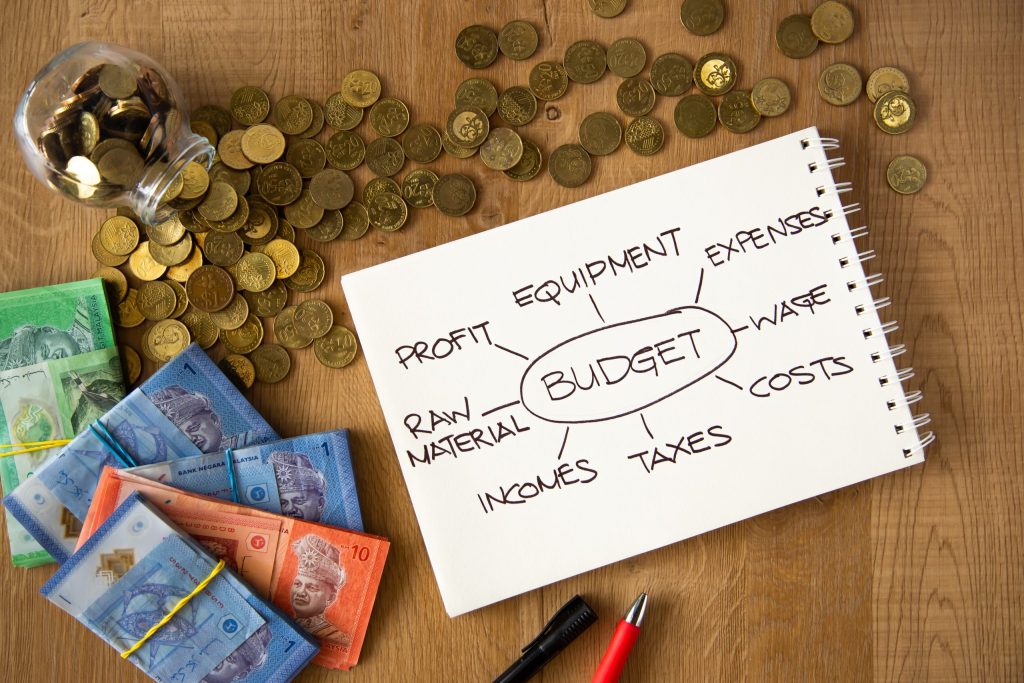How Variable Expenses Can Impact your Business Budget
![]() Variable costs, also known as variable expenses, are expenses that vary or change on a weekly or monthly basis, (unlike fixed costs, which remain the same each month) and they can have an effect on your business’s budget. The shifting amounts, behind variable expenses, makes planning for them in your business budget more difficult – but not impossible. There is not an exact science to budgeting for variable expenses, but there are some tricks you can use to make sure they don’t throw company’s budget off the rails. Before we get into the brass tax of how-tos, let’s nail down a little further on what variable expenses are defined as.
Variable costs, also known as variable expenses, are expenses that vary or change on a weekly or monthly basis, (unlike fixed costs, which remain the same each month) and they can have an effect on your business’s budget. The shifting amounts, behind variable expenses, makes planning for them in your business budget more difficult – but not impossible. There is not an exact science to budgeting for variable expenses, but there are some tricks you can use to make sure they don’t throw company’s budget off the rails. Before we get into the brass tax of how-tos, let’s nail down a little further on what variable expenses are defined as.
It is also helpful to understand the differences between 3 types of expenses that will affect your budget: variable expenses, discretionary expenses and fixed costs.
What Is a Variable Expense?
An expense is a variable expense when its total amount changes in proportion to the change in sales, production, or some other activity.
By comparison, fixed costs stay the same over an extended period of time.
Then there are discretionary expenses. Discretionary expenses change depending on use, too, but they are different from variable expenses.
Examples of Each Type of Business Expense
You need variable expenses to actually run your business. Discretionary expenses are can be thought of as those little extras you enjoy. The fit into the “nice-to-haves’ category, which you could still run your business without them. Here are we will cover what are fixed costs, examples of variable expenses, and give you a clearer understanding discretionary expenses, as well:
Fixed costs:
- Rent
- Insurance payments
- Most loan payments
- Dues and subscriptions
- Annual salaries
Variable expenses:
- Utilities payments
- Automobile usage expenses, like fuel and maintenance
- Office supplies
- Professional services charged by the hour
- Payroll for hourly employees
Discretionary expenses:
- Most meals and entertainment expenses
- Client gifts
- Staff parties and bonuses (sorry, employees)
Variable Expenses Are More Than Operating Costs
The bulleted lists above focus on operating costs, but variable expenses apply to your cost of goods sold, as well. If you are in the business of making a product, then you need to be aware of the variable costs of production.
Why is this so crucial? Because your variable costs of production have a direct impact on your break-even point. Your company’s break-even point is the quantity of your product you need to sell in order to cover your manufacturing & labor costs for the month. You or your CFO must know this number because once you exceed your break-even point, your business becomes profitable.
How Do Variable Expenses Affect My Business Budget?
Now that we have a pretty solid grasp of the 3 types of expenses in your business, let’s examine a little more in-depth about how variable expenses can affect your business budget. Now you can adjust your variable costs of production in response to a downturn in sales or production … in reality they adjust on their own because when production slows down, you stop incurring those costs. Overhead variable costs – like those listed above – are harder to adjust. Which also makes them harder to plan for in your annual or month budget.
Let’s examine a variable expense almost everyone can relate to: electricity bills or costs. Depending on where you live and what are your options for heating sources, your electric bill could range from $100/month in milder months (spring and fall) to higher than $300/month during the harshest times in the summer and winter.
Changing climate conditions also affect these already variable expenses. You could have a year or two of very mild winter weather, only to be struck out of the blue by a winter that didn’t seem to end. Yikes 2018 was one of those.
Although you can take steps – like using a smart thermostat- to reduce the amount you pay for electricity, this variable expense is mainly not in your control. This is annoying since an unexpectedly large electric bill can wreak havoc on your budget, especially if it coincides with a revenue slump. What if you manufacture a temperature-sensitive good, for instance, its not as though you can go without heat or cooling just save money – and most employees would probably agree with this issue. This was just one example of a variable cost, let’s go other some preventative tactics you can use to lessen the impact on your budget.
5 Ways to Reduce the Impact of Variable Expenses on Your Budget
Sometimes, you can reduce the impact of variable expenses by requesting your service provider to let you pay a fixed amount each month. (you should try this.) This fixed amount is based on the average of your bills for the previous 12 months. Many utilities companies offer this option to help their customers budget, but an average payment option won’t always be available for every variable expense in your budget.
You can still use the average payment framework to reduce the impact for variable expenses on budget. Here is how:
- Determine the annual average for each variable expense in your budget – When you’re determining the annual average for a variable expense, avoid the temptation to only look at the past 12 months. Take the time to review the average of three years’ worth of expenses. This will help you account for anomalies that may impact your average for an expense. Unless you have taken steps to permanently reduce a variable expense, err on the side of caution and use the highest average amount.
- Add a buffer – After you have determined the average for each variable expense, add a buffer to it. A buffer of 3% to 5% should be more than enough to cover price increases and most anomalies that will result in an outlier year for the expense. If you want to be really cautious—and if your budget can handle it—build in a buffer of 10%.
- Track your actual spending – Each month, compare your actual expenditure for each variable expense to the budgeted amount. Note if you were over budget or under budget for each expense category. If you use business accounting software, look for a Profit and Loss to Budget Comparison Report. This report can usually be customized to do the dollar amount increase or decrease calculation for you, so you can see at a glance if you were over or under budget without having to do the math yourself.
- Set up a savings account for variable expenses – This is the crucial step in this process. Each month you are under budget for a variable expense, move the excess into your savings account for variable expenses. This will create a reserve you can draw from during months when your expenses are higher than usual. For example, let’s say your electric bill averages $375/month. You’re having a mild winter, so your actual electric bill was $355 in January and $325 in February. March comes in like a lion, though, and a week of unexpected below-freezing temperatures results in a March electric bill of $445, when the bill for March is usually closer to $245.]. Most business owners budget their variable expenses based on the actual expense from the previous year. But because you have budgeted an average of $375/month for electricity ($130 more than your usual electric bill for March) and because you moved the excess money budgeted for your electric bill in January ($20) and February ($50) into your savings account for variable expenses, you have enough money for the unexpectedly high electric bill for the month of March. If you had only budgeted the $245 for a “normal” electric bill for March, you would have had to quickly come up with an extra $200. For a very small business, or a business experiencing a drop in revenue, this can be very difficult to do.
- Reassess your variable expenses annually – You might be tempted to use the same variable expenses projections in your budget each year, especially if you have saved a decent amount in your variable expenses savings account. Avoid this temptation. You should reassess your variable expenses each year. Especially in expense categories where you have a bit more control than you do with utilities—like automobile usage expenses—opportunities exist to make strategic changes to reduce the expenses, like investing in new equipment or taking advantage of available upgrades.
Pro Tip: Capturing All Variable Expenses in Your Budget
Most budgeting software templates are designed to match a typical business’s chart of accounts. This means fixed costs, variable expenses and discretionary expenses are scattered throughout the template. This layout makes it really simple to compare actual numbers to your budgeted numbers (remember we mentioned earlier Profit and Loss to Budget Comparison Report in a link?), but this also makes it easy to “gloss over” your variable and discretionary expenses when you are setting your budget numbers.
When you are first attempting to put together your company’s business budget, start by listing out your expenses by type (fixed, variable, and discretionary). After you have figured out the correct amount for each expense, you can then plug those amounts into your budget so it is ready to use to compare your budget to actual numbers each month.
Set up your budget template so it is ready to use to compare your budget to actual numbers each month. If you are doing this yourself, the best way to make sure you are prepared to navigate the impact of variable expenses, is by focusing on the costs of those expenses in the past, and preparing yourself with a buffer or some savings to care of them in the future. Averages are good indicators of where you might land so you are not surprised – and keep paying attention to fluctuations on monthly basis.
Variable Expenses Affect Your Budget… but They Shouldn’t Destroy It
It’s never that fun when you form a plan, only to be side swiped by circumstances that were not in your control, that can throw you off course. This one of main reason why small business owners sometimes avoid budgeting altogether.
Especially if most of your business expenses are variable — as is often the case with very small companies, where trying to drill down an accurate budget can feel daunting.
With a little bit of planning, even the most volatile of your variable expenses can be accounted for in your budget with ease. Building a buffer in a business savings account to carry you through the months when your variable expenses are higher than projected will keep your budget on track and manage your cash flow. Reassessing your budget for variable expenses annually will help you identify areas for savings and other improvements.












